Digitization will change working life considerably in the coming years – in almost all areas. If you don’t prepare, you will have a problem, one of those Articles from the world. The digital change is therefore increasingly changing our professional life. Without computers and the Internet, work stands still in many companies today. Craftsmen manufacture furniture or car parts with digital help, architects create construction plans in no time at all, where they had to make elaborate drawings beforehand. Employees are connected to one another via social networks, digital programs facilitate work processes and agreements with one another. Employees can concentrate on essential tasks and are no longer overloaded with administrative tasks, for example (source: Education experts ).
Digitization in the workplace: Home offices are usually better equipped than the office
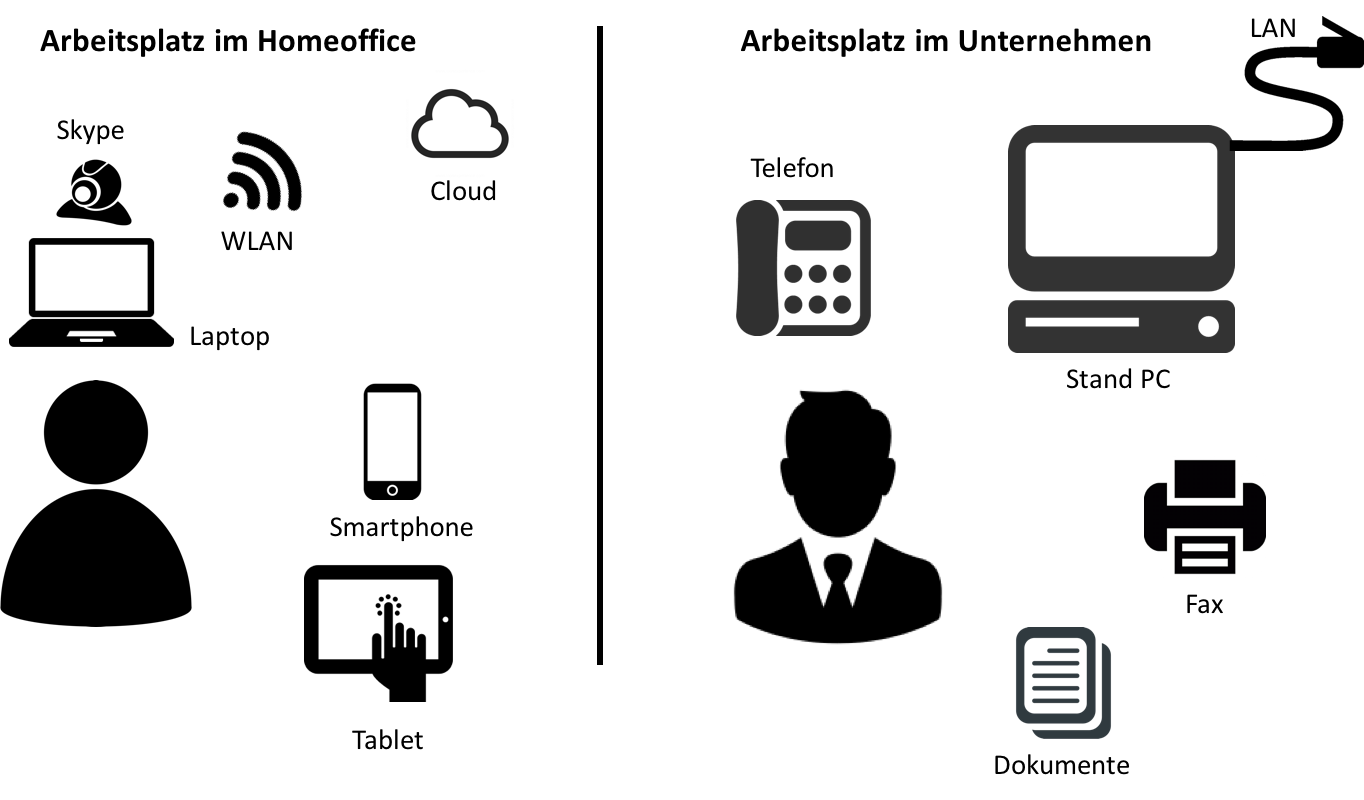
In the Study by WiWo on digitization in the workplace can be summarized as follows: “ Digitization is more advanced at home than at work in the office – this is shown by a study among German office workers. “ The study continues: The road to a truly digital office is still a long one. Because at the moment, the majority of German workplaces are not equipped to enable knowledge workers to really work digitally. Many administrative activities that can be handled much faster digitally are still carried out in analog form. That is the central result of a study by the hosting service provider Host Europe, which is based on a YouGov survey of 1,000 employees with office workplaces.
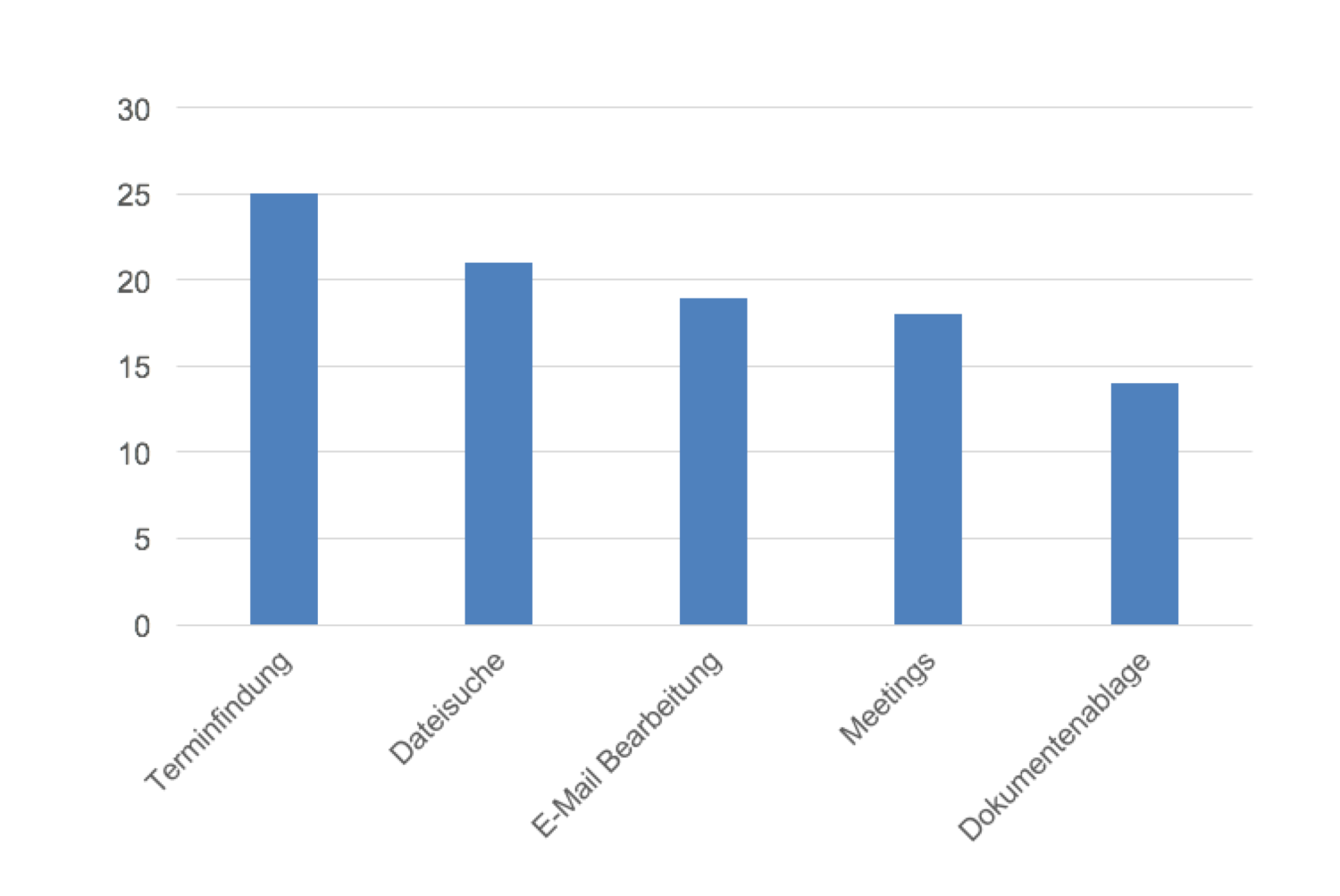
Status quo on digitization in the workplace
The Federal Ministry of Labour and Social Affairs published a digitization monitor. The results of the study in a nutshell:
- The majority of all respondents in companies with at least 50 employees subject to social security contributions use digital information and communication technologies (ICT) in their everyday work.
- While only half of the low-skilled use ICT for work, almost all of the high-skilled do.
- Managers are equipped with mobile devices by their employers much more often than employees without managerial responsibility.
- Almost four fifths of employees have experienced a change in the technical equipment of their workplace in the last five years, and here too the proportion increases with the level of training.
- As a result of the technological change, employees experience physical relief and reduced demands on their own skills and competencies on the one hand, but also the need to develop and multitask on the other.
- Almost 30 percent of employees report physical relief due to technological innovations, 15 percent report decreasing demands on their own skills and competencies.
- Employees who perceive decreasing demands take part less often in further professional development.
- Almost 80 percent of employees see the need to constantly develop their own skills due to technological changes. 65 percent perceive a consolidation of the work.
- Employees who perceive a need for further development take part in further professional development more frequently.
- 13 percent of employees consider it likely that their job will be taken over by a machine in the future.
- Around a third of employees experience greater freedom of choice due to technological developments.
- More than half of the respondents perceive an increase in their own productivity.

This is how digitization is changing the world of work
In one Article on Xing the changes caused by digitization in the workplace are shown. First, the article mentions the increasing spatial and temporal independence that results from the fact that employees can use laptops and other mobile devices to carry out their tasks from almost anywhere and increasingly at flexible times. Employees are thus more flexible overall and can better reconcile work and private life.
The importance of lifelong learning was also mentioned. More than ever, employees have to be ready to constantly learn new things, as the half-life of knowledge is significantly decreasing.
In addition, there is a high level of automation and this makes work much easier. The article mentions: Doctors, for example, who are shown important information about their patients using augmented reality glasses while they are operating, or mechanics who are shown the next steps for their planned repairs virtually and flexibly.
The article also notes an increased complexity and says: Information is continuously made available to employees via a variety of channels. Multi-tasking and the ability to focus become a basic requirement, so to speak. The speed in the company is increasing overall – there is a constant acceleration, which employees have to adapt to with agility and flexibility.
Last but not least, the article by Xing states that in the digitized world of work people work more in team structures than before. Above all, interdisciplinary teams that extend across different company areas or company boundaries are gaining in importance in order to achieve the best solutions for complex problems.
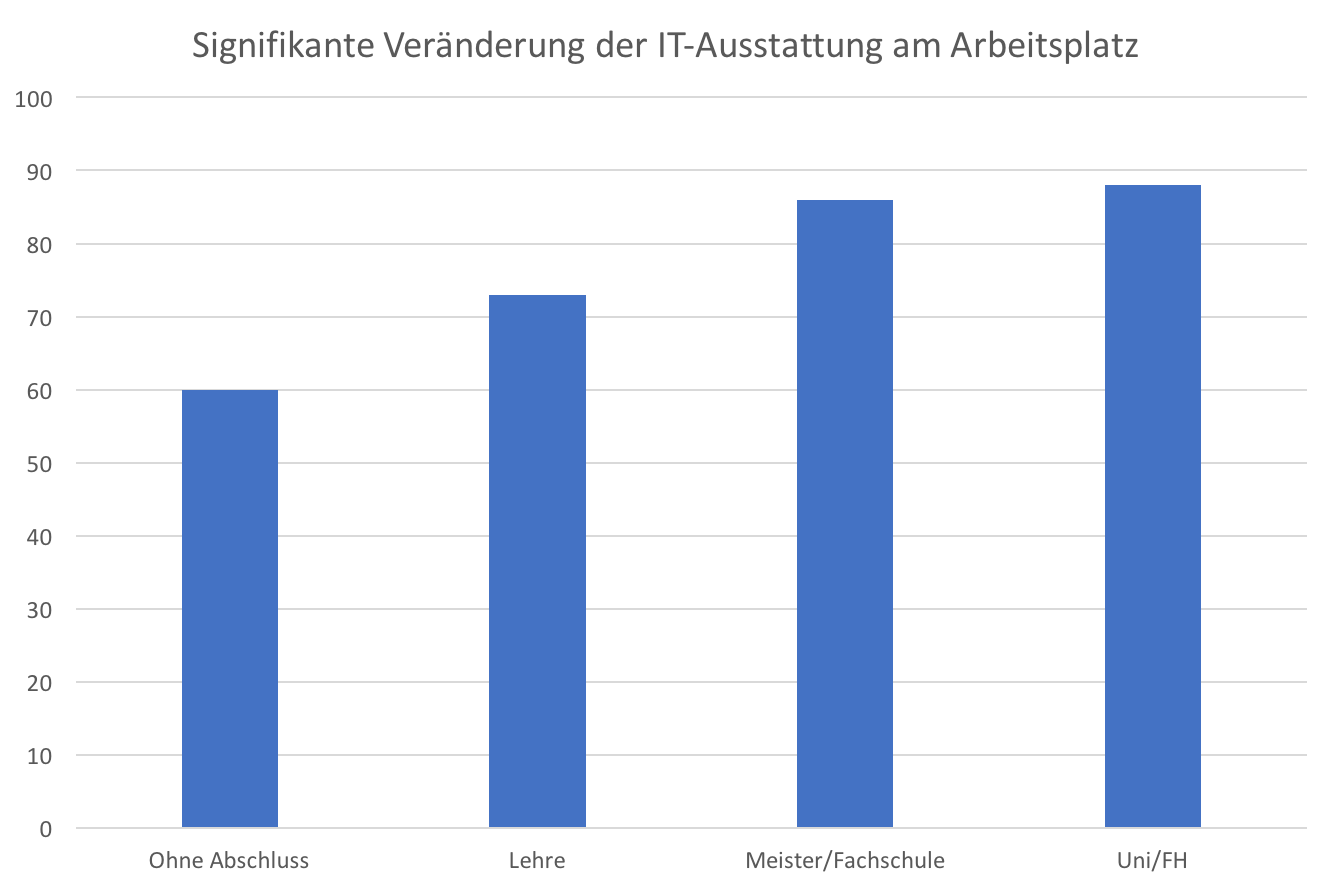
Chances of digitization in the workplace
The subjects of the study by the BMAS say about the opportunities of digitization: The technological innovations have given me more freedom of choice in structuring my work. Currently, 32% of those questioned confirm this sentence. The graphic below also shows that women with medium qualifications perceive the increase in their own work performance slightly more often than men due to technological innovations. Only minor differences can be observed between employees with different training levels and between occupational groups.
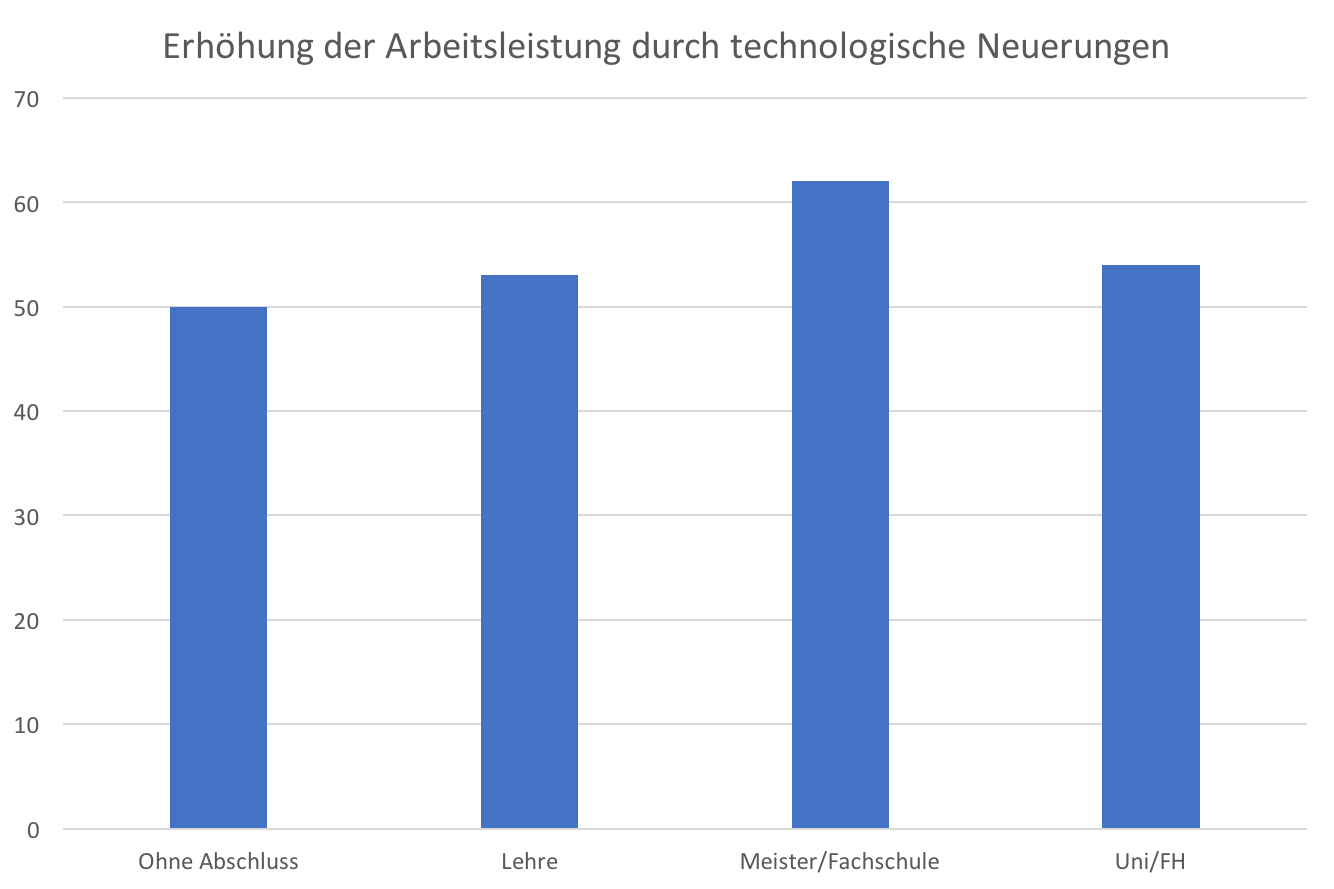
Risks of digitization in the workplace
Just as there are opportunities, there are also risks. Of the Articles by education experts shows this. The first risk is a devaluation of human labor. Intelligent software makes human work superfluous in some areas or devalues it financially. Professions such as salespeople, copywriter, language teacher or bank clerk are losing their social importance. Internet platforms are now providing service providers or tradespeople at low prices.
Another risk is the stress-related illness due to constant availability. Employees who are constantly available and constantly have to take on new tasks often suffer from an increasing workload. The result is increasing stress-related illnesses such as burn-out or depression. Due to the increasing pressure, many people can no longer switch off from work and only think about their job in their free time.
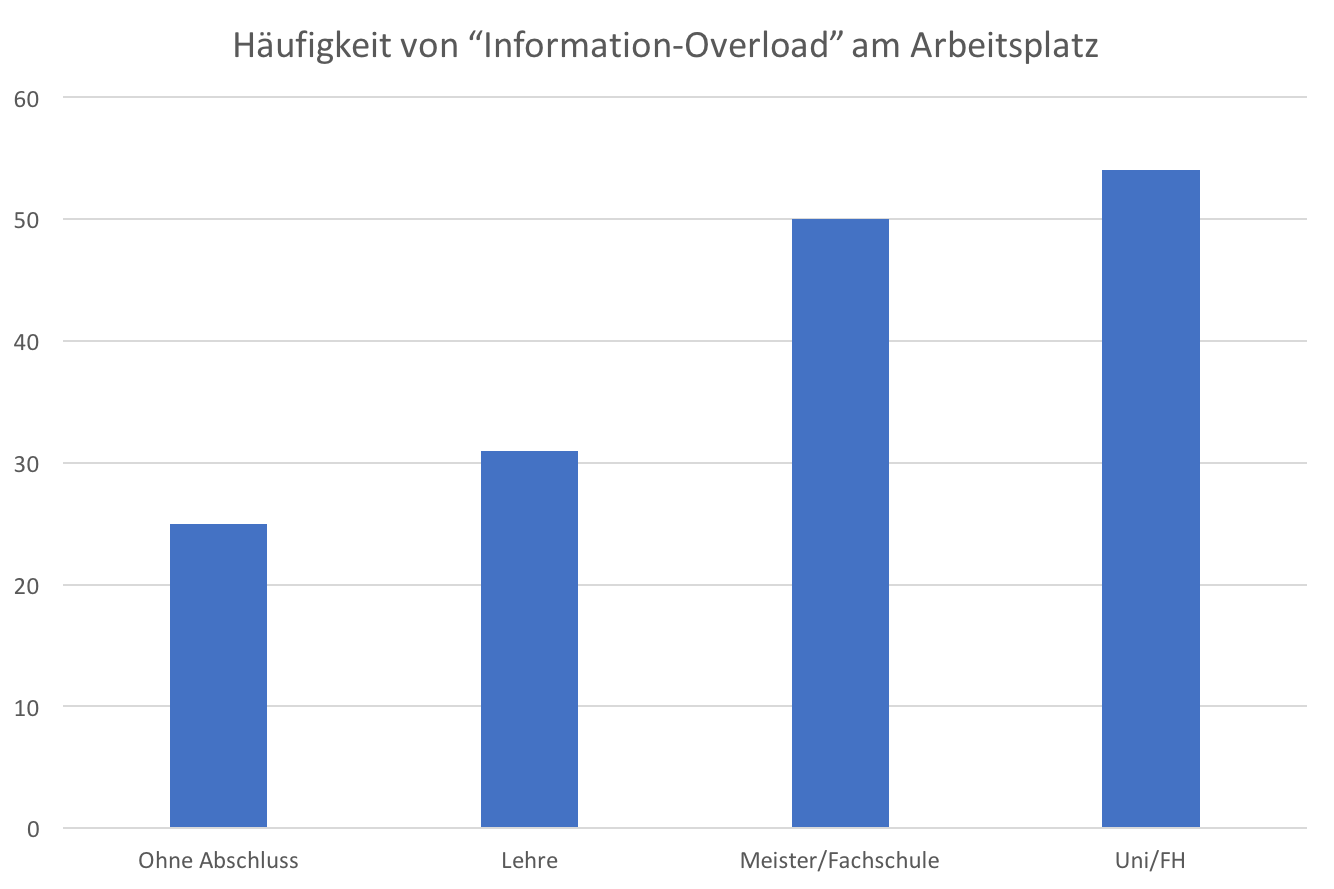
Furthermore, data protection is a high risk. The blog of education experts says: The topic of data protection has also played a major role in the digitized world of work, and not just since Edward Snowden’s revelations. Employees need to be confident that their data is secure.
The last risk is the “transparent employee”. Here the blog article by the education experts says: Whoever gives information about himself on social networks, be it on Xing, Twitter or Facebook, may turn himself into a transparent employee. In the worst case, it can even damage his professional success. It is not uncommon for companies to use the personal profiles of their employees in a targeted manner to find out about them and to make inquiries.
[yop_poll id=”14″]
Conclusion: digitization in the workplace is coming!
In the future, the use of digital gadgets in the workplace will increase and human work will change through automation and intelligent machines. People will probably increasingly take over areas in which a high level of creativity and thinking is required. In the last part of the article we see that digitization in the workplace also harbors the risks. Employees have to learn to deal with digitization and “just switch off”. It is therefore important to build digital skills among employees and managers so that digitization can support people instead of becoming torture.
Reading tip: Opportunities of the digital workplace and Risks of the digital workplace
[werbung]
[fotolia]



